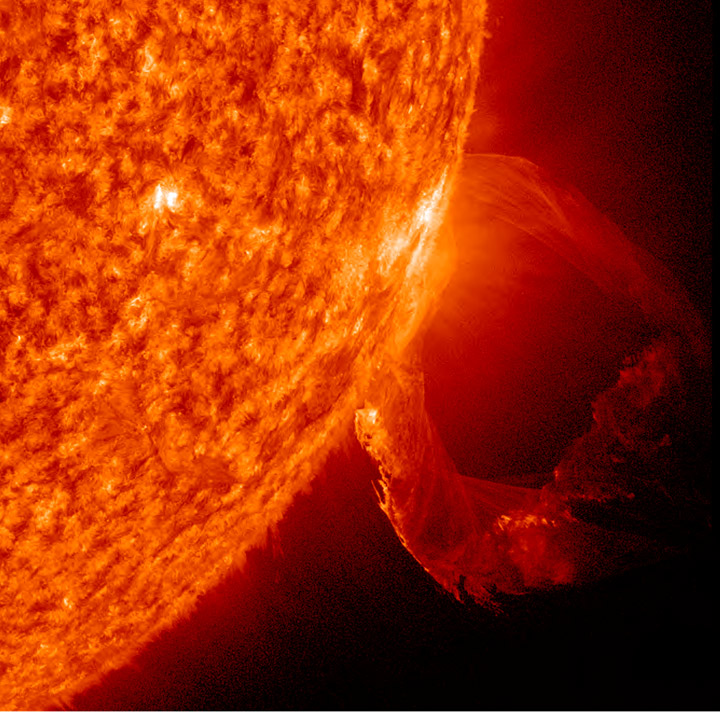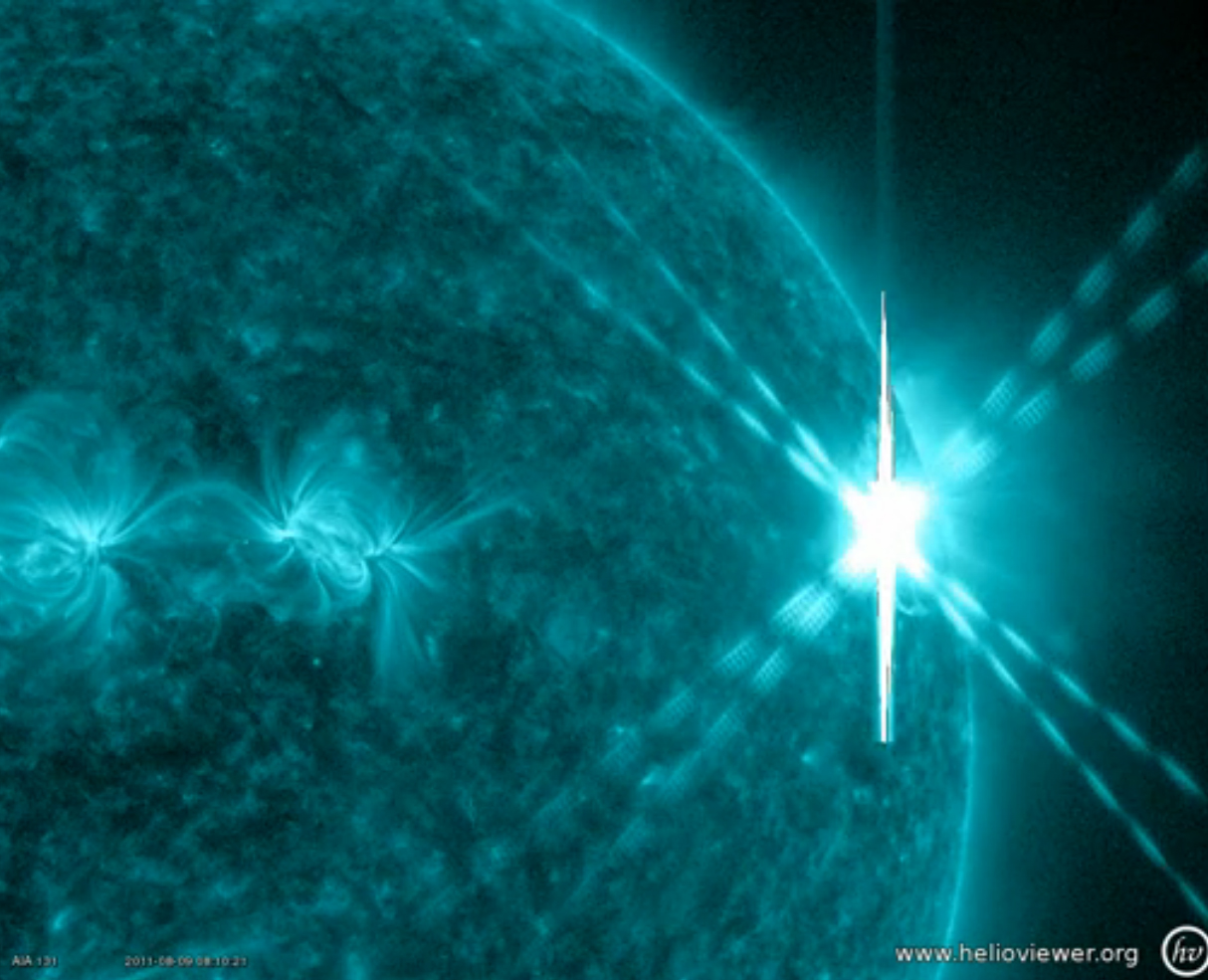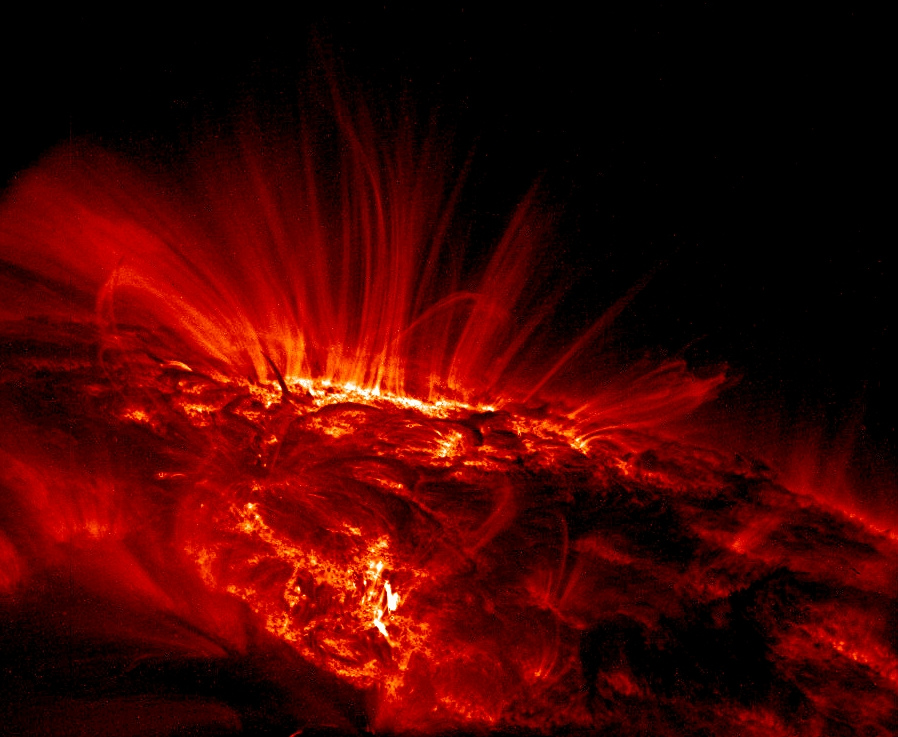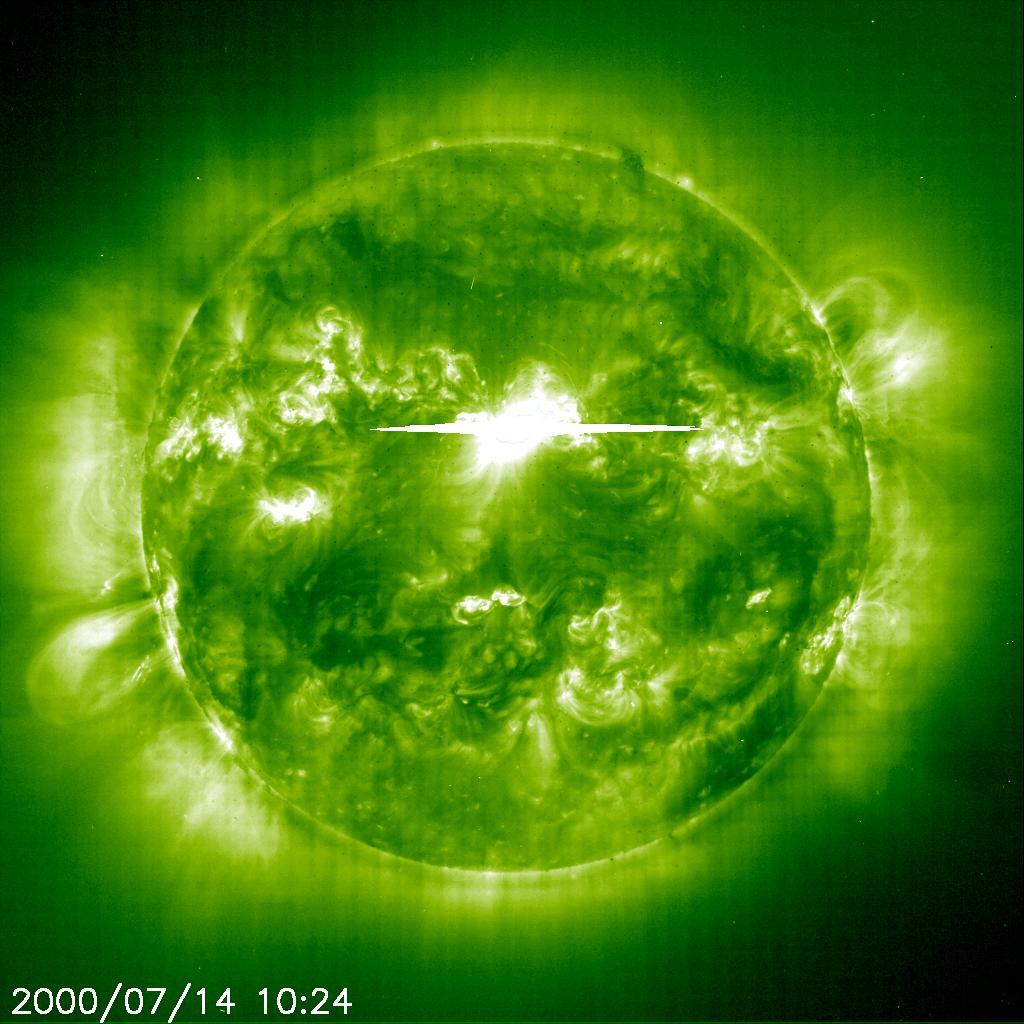Stunning Photos of Solar Flares & Sun Storms
Solar Eruption of Dec. 31, 2012
A solar eruption gracefully rose up from the sun on Dec. 31, 2012. The eruption extends about 160,000 miles out from the sun.
M9 Solar Flare, January 23, 2012
This SDO image (AIA 193) shows an M9-class solar flare erupting on the Sun's northeastern hemisphere at 03:49 UT on Jan. 23, 2012... just 4 days after a previous strong CME that sparked aurora around the world on the 22nd. More geomagnetic activity is expected for the 24th.
Sun's Twisting Plasma Tentacle
NASA's Solar Dynamics Observatory spacecraft captured this eruption from March 19, 2011 as a prominence became unstable and blasted into space with a distinct twisting motion.
UV View of the Aug. 9, 2011 Solar Flare
This still from a video taken by NASA's Solar Dynamics Observatory shows the Aug. 8, 2011 solar flare as it appeared in the ultraviolet range of the light spectrum. The flare registered as an X6.9 class sun storm, the largest of the Solar Cycle 24.
Monster Prominence
NASA's Solar Dynamics Observatory captured this view of a powerful M3.6 Class solar flare on Feb. 24, 2011 during a 90-minute sun storm. NASA scientists called the display a "monster prominence" that kicked up a huge plasma wave.
Solar Storm on June 7
A satellite view of the solar storm that erupted on the sun June 7.
Blazin'
This ultraviolet image of the sun shows large sunspot group AR 9169 as the bright area near the horizon. The relatively cool dark regions have temperatures of thousands of degrees Celsius, in contrast to the bright glowing gas flowing around the sunspots, which have a temperature of over one million degrees Celsius. Large sunspot group AR 9169 moved across the sun during September 2000.
Breaking space news, the latest updates on rocket launches, skywatching events and more!
Sun's Active Region 1158 Solar Flare
An X2.2 flare erupted from the sun's active region 1158 (at lower right) at about 0150 UT or 8:50 pm ET on Feb. 14, 2011.
Bastille Day Solar Flare
The "Bastille Day" solar flare as seen by SOHO's EIT instrument in the 195 Å emission line.
Why Sun's Atmosphere Is 'So Darned Hot'
This false-color temperature map shows solar active region AR10923, observed close to center of the sun's disk. Blue regions indicate plasma near 10 million degrees Kelvin.
Solar C7 Flare in Ultraviolet
The Solar Dynamics Observatory captured this video of the C7 flare of June 20, 2011 in extreme unltraviolet wavelength at 335 Å.

Space.com is the premier source of space exploration, innovation and astronomy news, chronicling (and celebrating) humanity's ongoing expansion across the final frontier. Originally founded in 1999, Space.com is, and always has been, the passion of writers and editors who are space fans and also trained journalists. Our current news team consists of Editor-in-Chief Tariq Malik; Editor Hanneke Weitering, Senior Space Writer Mike Wall; Senior Writer Meghan Bartels; Senior Writer Chelsea Gohd, Senior Writer Tereza Pultarova and Staff Writer Alexander Cox, focusing on e-commerce. Senior Producer Steve Spaleta oversees our space videos, with Diana Whitcroft as our Social Media Editor.











